History of Japanese Castles
Fortresses have been integral to Japan since ancient times. The 15th-century decline of central government authority marked the beginning of the Sengoku Jidai, or Warring States period, a chaotic era of continuous conflict among numerous small independent states. These states constructed small castles atop mountains to serve as defensive strongholds.
In the latter half of the 16th century, Oda Nobunaga reestablished central authority, and Toyotomi Hideyoshi completed Japan’s reunification. This era saw the construction of many larger castles, typically located in plains or on small hills within the plains. These castles served as regional administrative and military headquarters and symbols of authority, becoming the centers of “castle towns.”
Following the end of the feudal era in 1868, many castles were demolished as remnants of the past or were destroyed during World War II. Today, only a dozen original castles with main keeps dating from before 1868 survive. Additionally, several dozen castles have been reconstructed in recent decades, mostly using concrete rather than traditional materials.
Castle Structures and Castle Towns
Typical Japanese castles featured multiple rings of defense, with the innermost circle, the honmaru, containing the main castle tower. The lords often resided in palatial residences within the honmaru or the second circle, the ninomaru. Surrounding the castle, samurai lived in the town, with higher-ranking samurai residing closer to the castle. Merchants and artisans occupied separate districts, while temple and entertainment districts were located on the outskirts.
Original castles were primarily constructed from wood, a detail evident in surviving interiors. However, modern reconstructions, typically built from concrete, often house museums.
Common Castle Features
- Castle Tower (Tenshukaku): The most prominent structure, also known as the donjon or keep, typically had two to five stories with more internal floors than visible stories. An example is Kumamoto Castle’s tower.
- Walls and Moats: Defensive measures included several rings of walls and moats. Notable examples are the walls and moats of Osaka Castle and the former Edo Castle (now Tokyo’s Imperial Palace).
- Guard Towers (Yagura): These smaller structures served as watch towers and storage rooms, often located at the corners of castle walls. Hiroshima Castle features a notable guard tower.
- Gates: Castles had multiple heavily defended entrance gates, usually arranged at 90-degree angles to create defensible inner yards. The Sakurada Gate of the former Edo Castle is an example.
- Palace (Goten): This was the lord’s residence and administrative office. While most original palaces have been lost, some, like the Ninomaru Palace of Nijo Castle, survive. Others, such as those at Kumamoto Castle, Hikone Castle, and Nagoya Castle, have been partially reconstructed.
These castles and their surrounding towns remain significant cultural symbols, offering a glimpse into Japan’s rich feudal history.
Top castles are:
Osaka castle
The castle and fortress are one of Japan’s most famous landmarks and it played a major role in the unification of Japan during the sixteenth century of the Azuchi-Momoyama period.
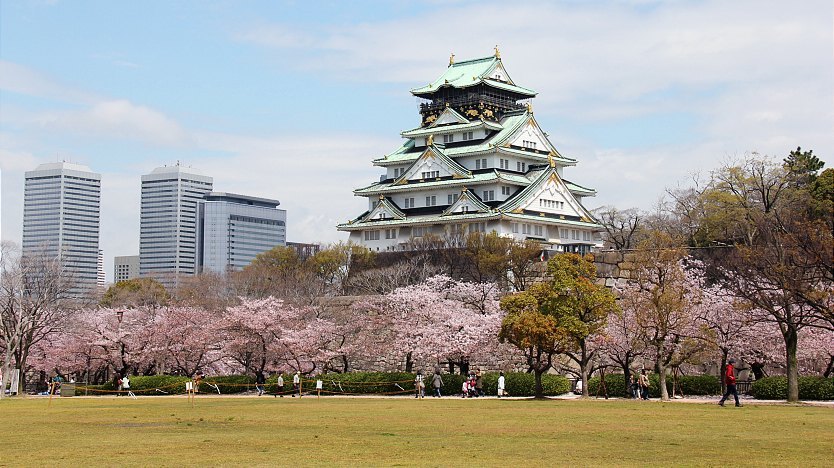
Nijo Castle
Former Kyoto residence of the shogun
Location: Kyoto
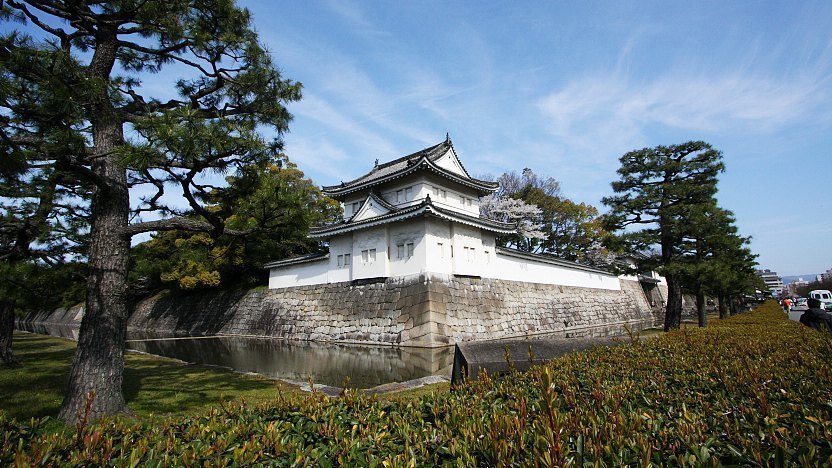
Imperial East Gardens (Tokyo)
Park on the former grounds of Edo Castle
Location: Tokyo
The Imperial Palace East Gardens (皇居東御苑, Kōkyo Higashi Gyoen) are part of the inner palace area and open to the public. They are the former site of Edo Castle’s innermost circles of defense, the honmaru (“main circle”) and ninomaru (“secondary circle”). None of the main buildings remain today, but the moats, walls, entrance gates and several guardhouses still exist.
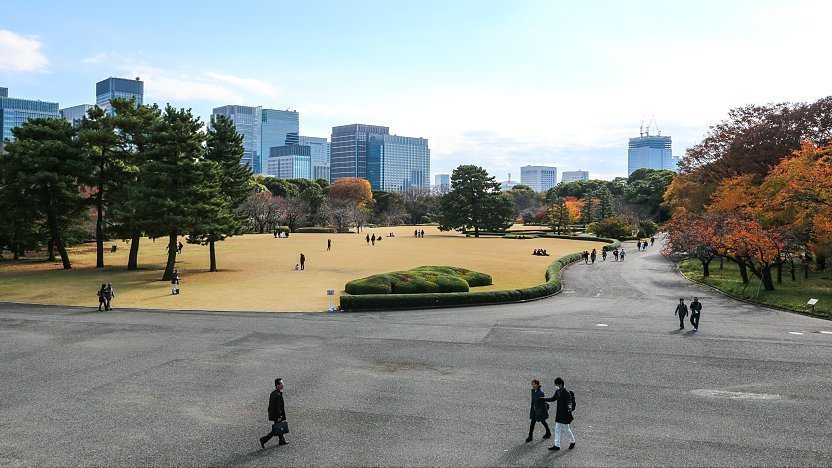
Himeji Castle
Japan’s best preserved feudal castle
Himeji Castle (姫路城, Himejijō), often referred to as White Heron Castle (Shirasagijo) because of its graceful, white facade, is renowned as Japan’s most magnificent castle.
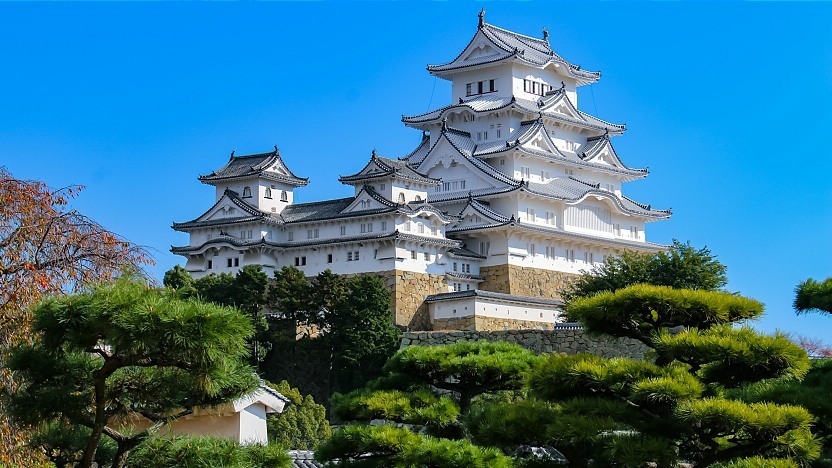
It is celebrated for its impressive size, aesthetic beauty, and the well-preserved, intricate castle grounds. Designated as both a national treasure and a world heritage site, Himeji Castle stands out among Japanese castles as it has never been destroyed by war, earthquakes, or fire. It remains one of the country’s twelve original castles still intact today.
Hiroshima Castle
Hiroshima Castle (広島城, Hiroshimajō), also known as the Carp Castle, exemplifies a castle built on a plain in the heart of a city, contrasting with hilltop and mountaintop castles. The main keep stands five stories tall, surrounded by a moat. Within the castle grounds, you’ll find a shrine, ruins, and several reconstructed buildings of the Ninomaru (second circle of defense).
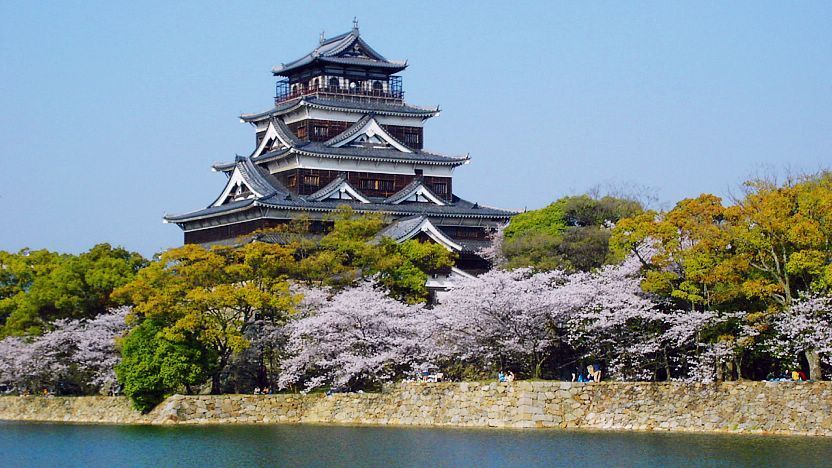
Hiroshima evolved as a castle town, with the castle serving as the city’s physical and economic center. Constructed in 1589 by the powerful feudal lord Mori Terumoto, Hiroshima Castle was a significant seat of power in western Japan. Unlike many castles that were demolished during the Meiji Period, Hiroshima Castle survived until it was destroyed by the atomic bomb in 1945, along with much of the city.
Nagoya Castle
Nagoya Castle (名古屋城, Nagoyajō) was constructed at the start of the Edo Period (1603-1868) as the seat of the Owari branch, one of the three branches of the ruling Tokugawa family. It was one of the largest castles in Japan, and the castle town that developed around it eventually became the country’s fourth-largest city.
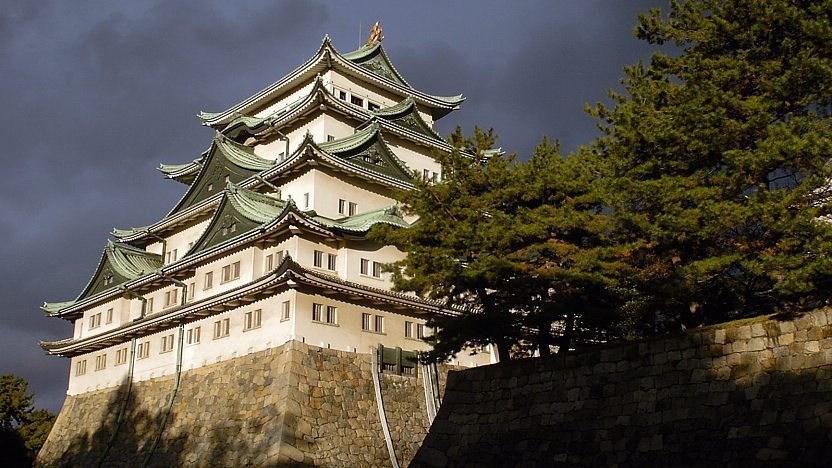
Most of the castle buildings, including the keep and palace, were destroyed during the air raids of 1945. The current ferro-concrete reconstruction of the castle keep was completed in 1959 and housed a museum about the castle’s history until its closure in May 2018. The surrounding park features two circles of moats and impressive walls with corner turrets, making it a popular hanami spot during the cherry blossom season, which typically peaks in late March or early April.
Matsumoto Castle
Matsumoto Castle (松本城, Matsumotojō) is one of the most well-preserved and stunning among Japan’s original castles, meaning its keep has survived intact from the post-feudal era. Unlike many other castles, it was built on the plains rather than on a hill or mountain. Matsumoto Castle is distinctive for having both a secondary donjon and a turret connected to its main keep. The castle’s structures, with their characteristic black wainscoting, exude an air of grandeur and elegance.
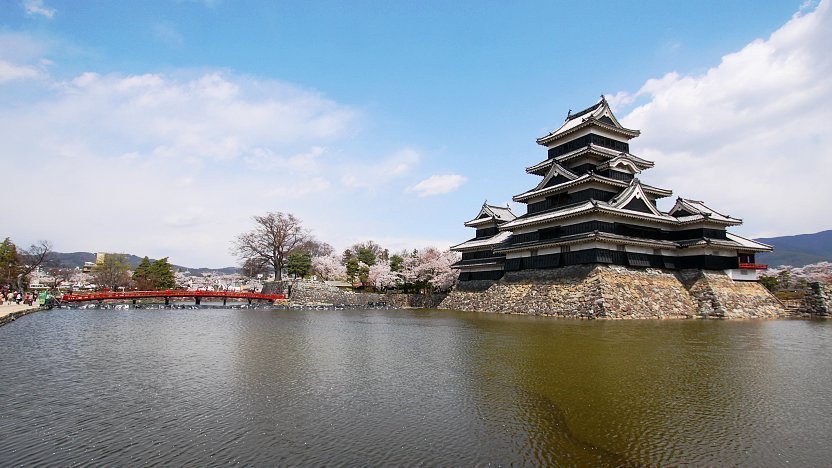
The main keep and the smaller, secondary donjon of Matsumoto Castle were constructed between 1592 and 1614, during a time when peace was not yet fully established, necessitating strong fortifications. In 1635, after military threats had subsided, a third turret with minimal defenses and another turret designed for moon viewing were added to the castle.
Kanazawa Castle
From 1583 until the end of the Edo Period, Kanazawa Castle (金沢城, Kanazawajō) served as the seat of the powerful Maeda Clan, rulers of the Kaga domain, which was second only to the Tokugawa possessions in terms of size and wealth. Over the centuries, the castle was destroyed by fire multiple times, with the most recent blaze in 1881 leaving only two storehouses and the Ishikawa-mon Gate intact. The gate, which dates back to 1788, faces Kenrokuen Garden.
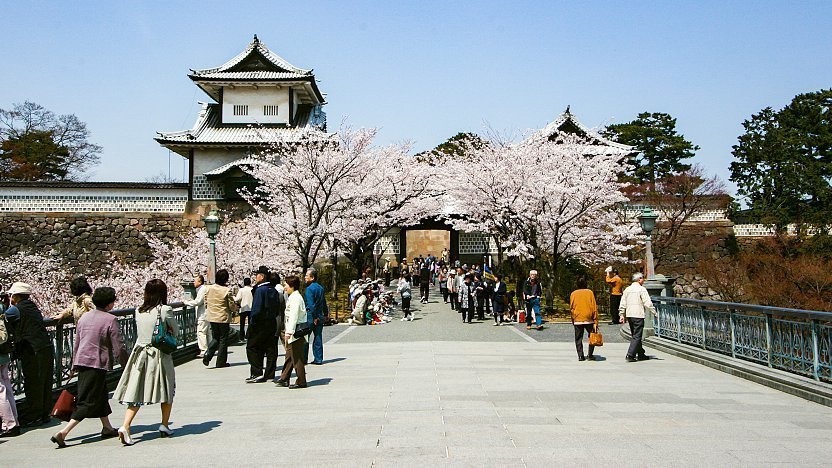
For several decades, Kanazawa University occupied the former castle grounds until relocating to the city’s outskirts in the early 1990s. Since then, efforts have been underway to reconstruct the castle’s former buildings. Today, many of the central structures have been rebuilt, making a visit to the site even more fascinating.
Kumamoto Caslte
Kumamoto Castle (熊本城, Kumamotojō) is among Japan’s most impressive castles, featuring extensive grounds and a variety of buildings that provide visitors with a comprehensive castle experience.
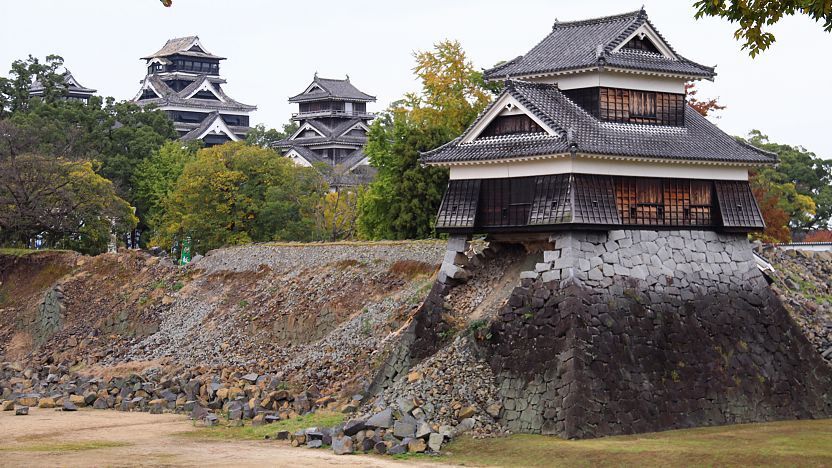
Since its construction in 1607, only a few original structures have survived. Most of the castle keep and other buildings are modern reconstructions, but they are of high quality, and new buildings are continually being added. With around 800 cherry trees, the castle becomes a popular cherry blossom viewing spot in late March and early April.
Shuri Castle
Now a district of Naha, Shuri was once the capital of the Ryukyu Kingdom. Shuri Castle (首里城, Shurijō) served as the administrative center and residence of the Ryukyu kings for centuries until Okinawa became a Japanese prefecture in 1879. It is one of the UNESCO World Heritage-designated Castles of the Ryukyu Kingdom sites. Originally constructed in the late 1300s, Shuri Castle played a key role in the political unification of the island.
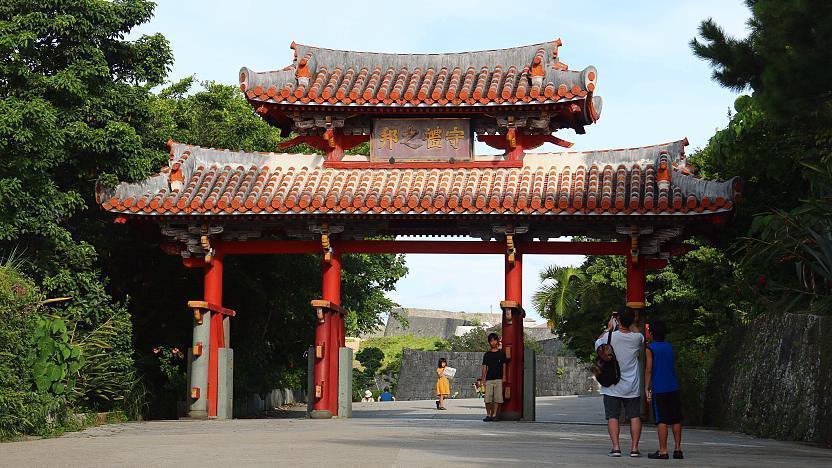
Over the centuries, it was destroyed by wars and fires multiple times, most recently during the Battle of Okinawa in 1945 and again in a fire in 2019. Reconstruction efforts are underway, with the main hall set to be restored by 2026. Visitors approach the castle’s central buildings through several gates, including the famous Shureimon Gate. The castle’s hilltop location offers beautiful views over Naha.